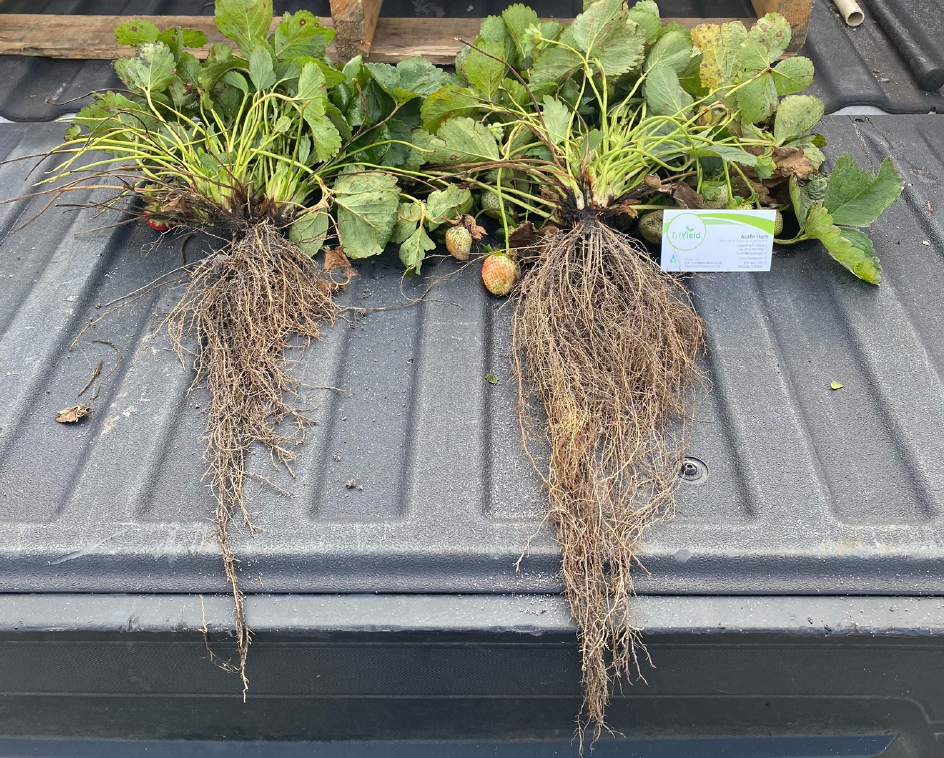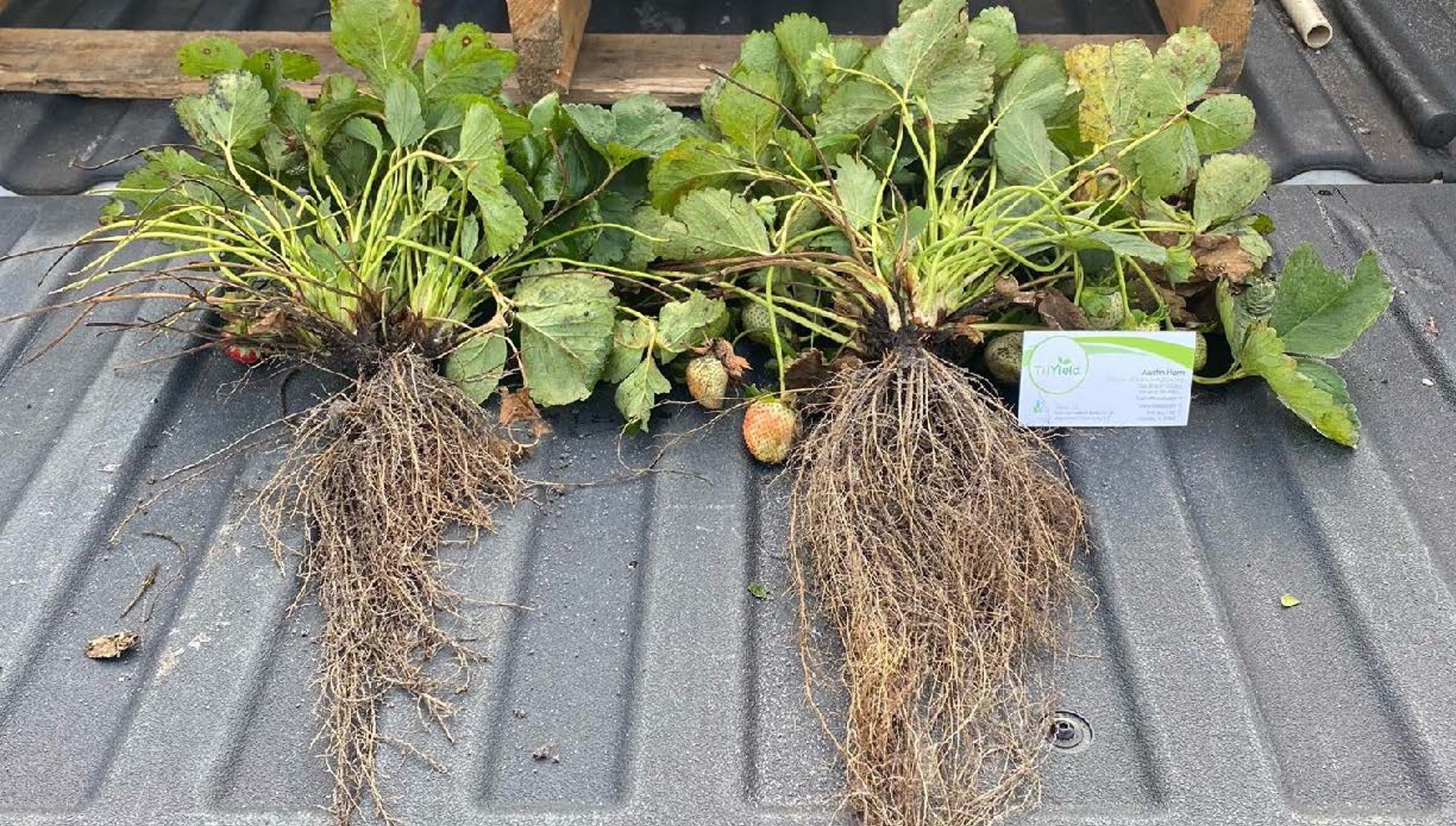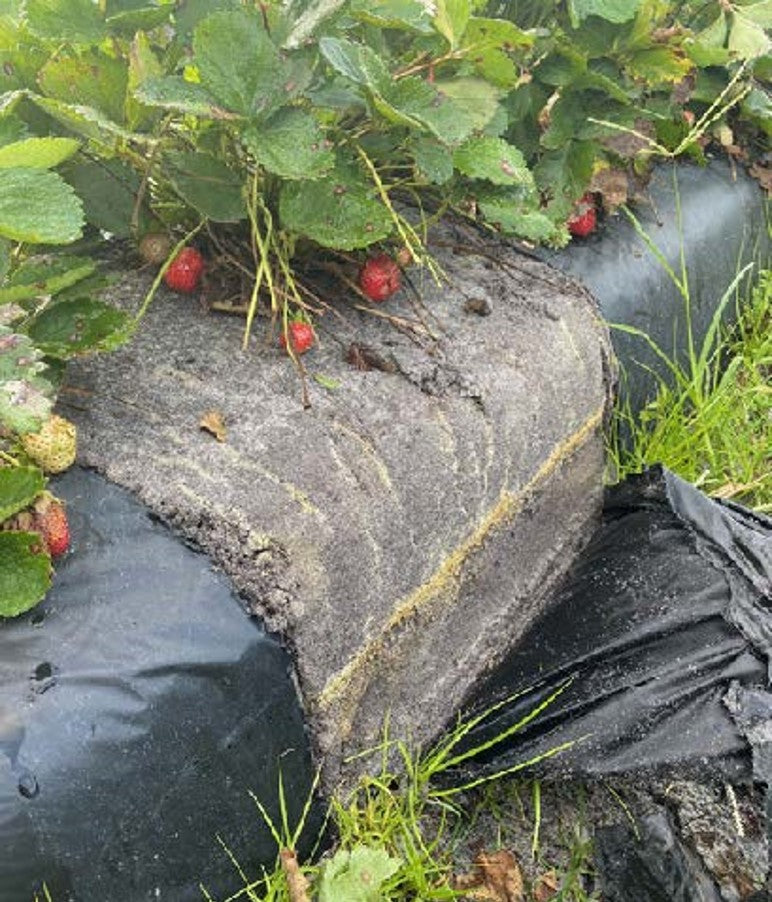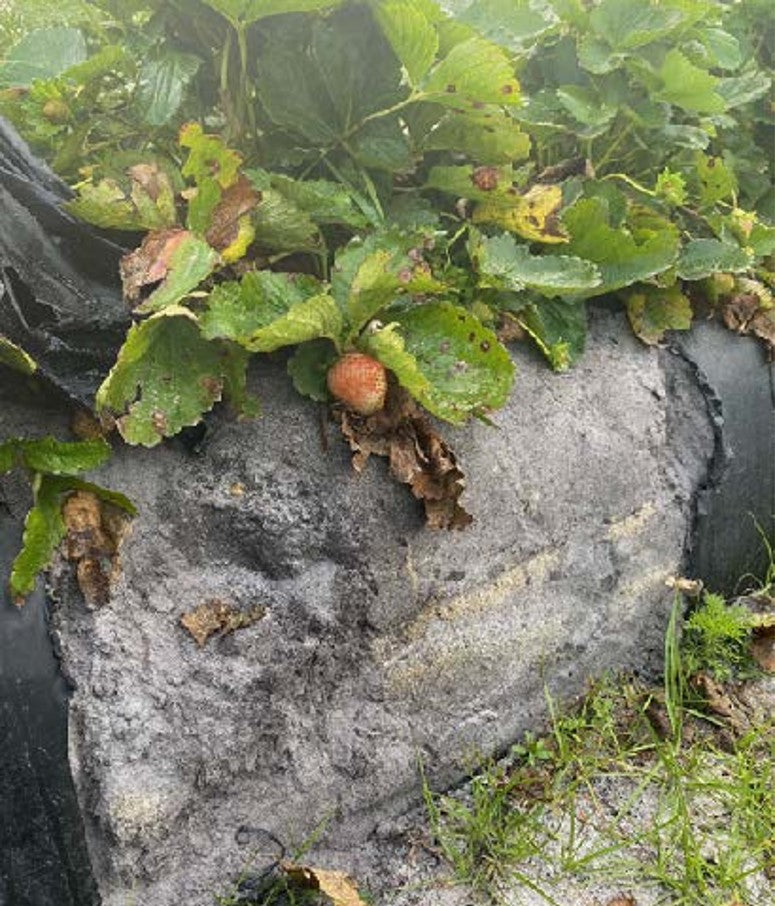Salinity/high-salt soil is recognized as one of the most significant "limiting factors" in high-production agriculture today.
While salt is a natural component of all soil, high concentrations of salt have been brought into our farm systems over the past 5-6 decades through applied fertilizer and in the irrigation water we use today. Most crop plants are sensitive to salinity, the number of acres affected is increasing day by day.
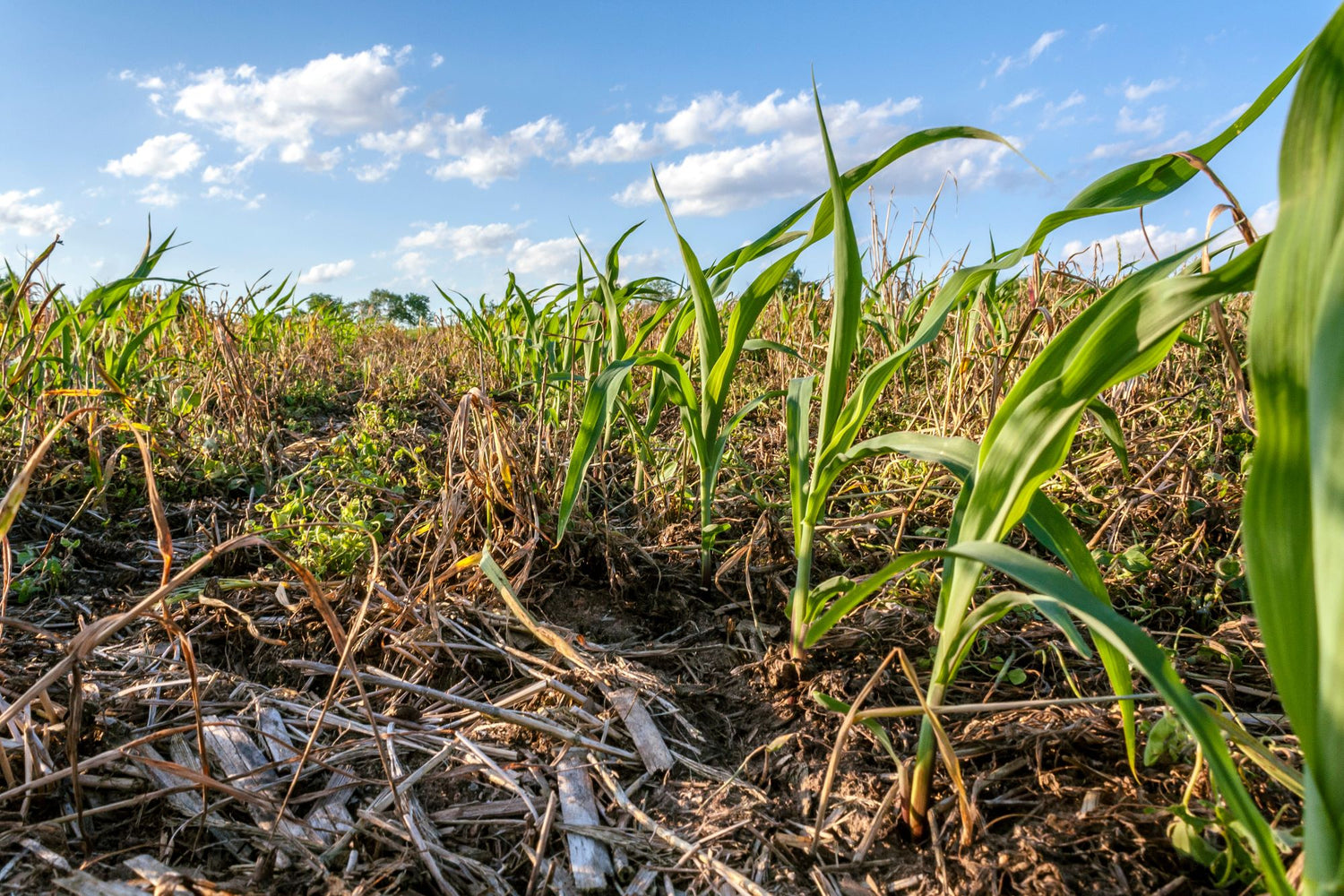
Effects of Soil Salinity
Soil salinity leads to:
- Ion toxicity. Decreasing photosynthetic energy and chlorophyll concentrations, which accelerates leaf senescence and leaf demise.
- Osmotic stress. This causes critical cell damage, nutrient deficiency, and oxidative stress, which limits water uptake from soil.
Salinity affects most aspects of plant development, including germination, vegetative growth, and reproductive development.
Diminished agricultural productivity means low economic returns this year and without a change in cultural practices or input selections, this trend will continue. There is something farmers can do.
This Fix Includes Both Chemistry and Biology:
Dissociation
Reassociation
Uptake & Exchange
A salt molecule has no energy and it lacks the exchange capacity to be metabolized. Biology plays an important role in making the molecule plant available.
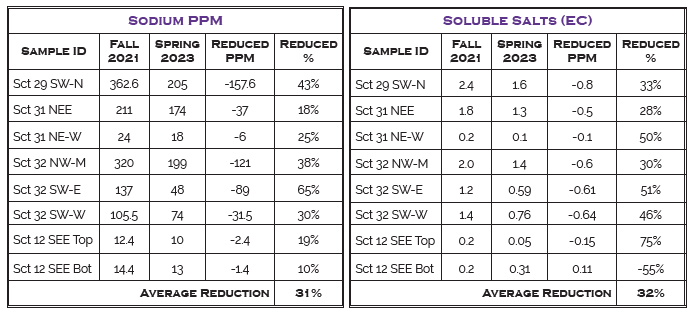
Taken from Scott Rygg's soil tests, the data highlights the reduction in sodium and soluble salts.
This achievement was made in only 18 months on his farm!


